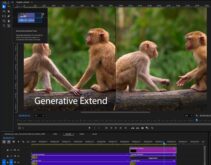Choosing video resolution and data rate are two of the most fundamental decisions that streaming producers must make. This article identifies the factors integral to these choices.
Editor’s Note: You can find a more up-to-date article on this subject here.
There are (at least) three elements to consider when choosing the resolution and video data rate for your streaming video. First is to understand the types of artifacts that viewers notice and ensure that whatever encoding parameters you use, these artifacts aren’t present. Second is to review the parameters used by competitors and other major sites frequented by your viewers. Third, is to analyze the per pixel data rate used by those sites and your proposed parameters and make sure that your data rate isn’t excessively high or low.
What viewers love to hate
Let’s start with the first. There’s been very little research done on viewer perceptions of video quality, but much of it has been done by Hendrik Knoche, a PhD student at University College London, who has published a host of articles on streaming quality that you can see here. One of the most interesting slides that I found in his works is shown below. Though the data is a bit long in the tooth, it’s still relevant in regards to finding the optimal data rate that satisfies viewers but doesn’t waste bandwidth.

Viewer acceptability and data rate.
Briefly, the slide assesses viewer satisfaction relating to news content containing legible text on mobile TV as displayed on a number of devices. The left axis is video quality acceptability while the bottom axis is the encoding bitrate.
As you can see, viewer satisfaction increases sharply at all viewing resolutions as the data rate jumps from 0 to 100Kbps, but then the rate slows dramatically, especially for the 320×240 video displayed on the HP iPAQ, where tripling the data rate increases quality acceptability by only about 10%. For the 240×180 and 208×156 videos, viewer satisfaction actually decreased with additional data rate. In financial terms, your initial investments in bandwidth enjoy a high rate of return, but once quality is “acceptable,” the rate of return drops and can even go negative.
How do you find the tipping point where quality is good enough? In their article “Can Small Be Beautiful,” Knoche and his co-authors asked their participants to specify what made the video they were watching unacceptable. With news videos, almost 100 of 128 viewers commented about text detail, which, according to the article, included the news ticker, headlines, clock, logos, and captions. Of relevance to this discussion, facial and general detail drew about 30 comments each, as did audio fidelity.
This tells me two things. First, when planning your shoots, eliminate as much detail as possible, since these stress the codec, display artifacts readily, and are a significant source of complaints. Second, when choosing a data rate, be sure it’s high enough to deliver artifact-free faces as well as text and other details. Once these components are artifact free, you get dramatically decreasing returns from further bandwidth investment.
Next, I discuss the resolutions and data rates used by aggressive corporate and broadcast sites.
 Streaming Learning Center Where Streaming Professionals Learn to Excel
Streaming Learning Center Where Streaming Professionals Learn to Excel








